
Özge Drama
Robotics Control Engineer
- Münich, Germany
- ResearchGate
- Github
- Google Scholar
- ORCID
Publications
Theses
2021
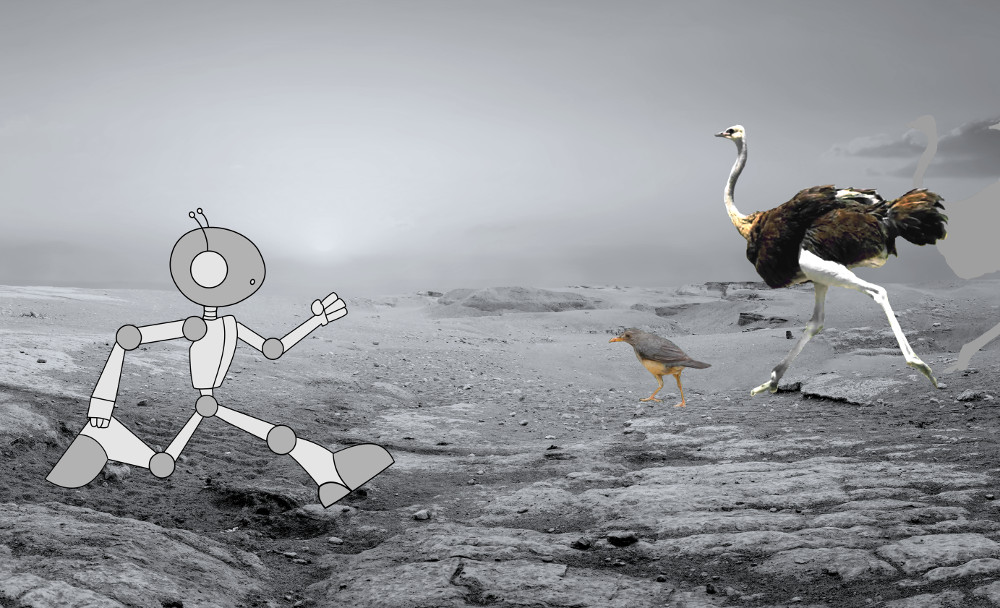 Control mechanisms for postural stability and trunk motion in bipedal running: A numerical study for humans, avians, and bipedal robots
Control mechanisms for postural stability and trunk motion in bipedal running: A numerical study for humans, avians, and bipedal robots
Özge Drama
University of Stuttgart, 2021The abstract is not available.
@phdthesis{Drama_2021, title = {Control mechanisms for postural stability and trunk motion in bipedal running: A numerical study for humans, avians, and bipedal robots}, school = {University of Stuttgart}, author = {Drama, \"Ozge}, year = {2021} }Drama, Ö. (2021). Control mechanisms for postural stability and trunk motion in bipedal running: A numerical study for humans, avians, and bipedal robots [PhD thesis]. University of Stuttgart.
Journal Articles
2020
 Virtual point control for step-down perturbations and downhill slopes in bipedal running
Virtual point control for step-down perturbations and downhill slopes in bipedal running
Özge Drama and Alexander Badri-Spröwitz
Frontiers in Bioengineering and Biotechnology, 2020Bipedal running is a difficult task to realize in robots, since the trunk is underactuated and control is limited by intermittent ground contacts. Stabilizing the trunk becomes even more challenging if the terrain is uneven and causes perturbations. One bio-inspired method to achieve postural stability is the virtual point (VP) control, which is able to generate natural motion. However, so far it has only been studied for level running. In this work, we investigate whether the VP control method can accommodate single step-down perturbations and downhill terrains. We provide guidelines on the model and controller parameterizations for handling varying terrain conditions. Next, we show that the VP method is able to stabilize single step-down perturbations up to 40 cm, and downhill grades up to 20–40 degrees corresponding to running speeds of 2–5 m/s. Our results show that the VP approach leads to asymmetrically bounded ground reaction forces for downhill running, unlike the commonly-used symmetric friction cone constraints. Overall, VP control is a promising candidate for terrain-adaptive running control of bipedal robots.
@article{Drama_2020_FR, author = {Drama, \"Ozge and Badri-Spr\"owitz, Alexander}, title = {Virtual point control for step-down perturbations and downhill slopes in bipedal running}, journal = {Frontiers in Bioengineering and Biotechnology}, volume = {8}, pages = {1359}, year = {2020}, month = dec, url = {https://www.frontiersin.org/article/10.3389/fbioe.2020.586534}, doi = {10.3389/fbioe.2020.586534}, issn = {2296-4185}, abstract = {Bipedal running is a difficult task to realize in robots, since the trunk is underactuated and control is limited by intermittent ground contacts. Stabilizing the trunk becomes even more challenging if the terrain is uneven and causes perturbations. One bio-inspired method to achieve postural stability is the virtual point (VP) control, which is able to generate natural motion. However, so far it has only been studied for level running. In this work, we investigate whether the VP control method can accommodate single step-down perturbations and downhill terrains. We provide guidelines on the model and controller parameterizations for handling varying terrain conditions. Next, we show that the VP method is able to stabilize single step-down perturbations up to 40 cm, and downhill grades up to 20–40 degrees corresponding to running speeds of 2–5 m/s. Our results show that the VP approach leads to asymmetrically bounded ground reaction forces for downhill running, unlike the commonly-used symmetric friction cone constraints. Overall, VP control is a promising candidate for terrain-adaptive running control of bipedal robots.} }Drama, Ö., & Badri-Spröwitz, A. (2020). Virtual point control for step-down perturbations and downhill slopes in bipedal running. Frontiers in Bioengineering and Biotechnology, 8, 1359. https://doi.org/10.3389/fbioe.2020.586534
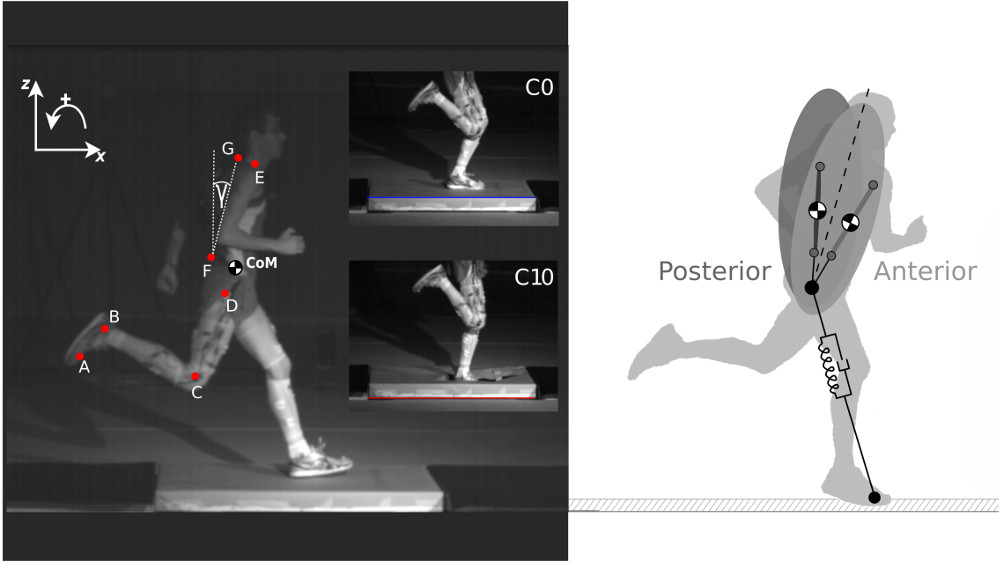 Postural stability in human running with step-down perturbations: an experimental and numerical study
Postural stability in human running with step-down perturbations: an experimental and numerical study
Özge Drama, Johanna Vielemeyer, Alexander Badri-Spröwitz, and Roy Müller
Royal Society Open Science, 2020Postural stability is one of the most crucial elements in bipedal locomotion. Bipeds are dynamically unstable and need to maintain their trunk upright against the rotations induced by the ground reaction forces (GRFs), especially when running. Gait studies report that the GRF vectors focus around a virtual point above the centre of mass (VPA), while the trunk moves forward in pitch axis during the stance phase of human running. However, a recent simulation study suggests that a virtual point below the centre of mass (VPB) might be present in human running, because a VPA yields backward trunk rotation during the stance phase. In this work, we perform a gait analysis to investigate the existence and location of the VP in human running at 5 m/s, and support our findings numerically using the spring-loaded inverted pendulum model with a trunk. We extend our analysis to include perturbations in terrain height (visible and camouflaged), and investigate the response of the VP mechanism to step-down perturbations both experimentally and numerically. Our experimental results show that the human running gait displays a VPB of ≈−30 cm and a forward trunk motion during the stance phase. The camouflaged step-down perturbations affect the location of the VPB. Our simulation results suggest that the VPB is able to encounter the step-down perturbations and bring the system back to its initial equilibrium state.
@article{Drama_Vielemeyer_2020, author = {Drama, \"Ozge and Vielemeyer, Johanna and Badri-Spr\"owitz, Alexander and M\"uller, Roy}, title = {Postural stability in human running with step-down perturbations: an experimental and numerical study}, journal = {Royal Society Open Science}, volume = {7}, number = {11}, pages = {200570}, year = {2020}, month = nov, doi = {10.1098/rsos.200570}, url = {https://royalsocietypublishing.org/doi/abs/10.1098/rsos.200570}, eprint = {https://royalsocietypublishing.org/doi/pdf/10.1098/rsos.200570}, abstract = {Postural stability is one of the most crucial elements in bipedal locomotion. Bipeds are dynamically unstable and need to maintain their trunk upright against the rotations induced by the ground reaction forces (GRFs), especially when running. Gait studies report that the GRF vectors focus around a virtual point above the centre of mass (VPA), while the trunk moves forward in pitch axis during the stance phase of human running. However, a recent simulation study suggests that a virtual point below the centre of mass (VPB) might be present in human running, because a VPA yields backward trunk rotation during the stance phase. In this work, we perform a gait analysis to investigate the existence and location of the VP in human running at 5 m/s, and support our findings numerically using the spring-loaded inverted pendulum model with a trunk. We extend our analysis to include perturbations in terrain height (visible and camouflaged), and investigate the response of the VP mechanism to step-down perturbations both experimentally and numerically. Our experimental results show that the human running gait displays a VPB of ≈−30 cm and a forward trunk motion during the stance phase. The camouflaged step-down perturbations affect the location of the VPB. Our simulation results suggest that the VPB is able to encounter the step-down perturbations and bring the system back to its initial equilibrium state.} }Drama, Ö., Vielemeyer, J., Badri-Spröwitz, A., & Müller, R. (2020). Postural stability in human running with step-down perturbations: an experimental and numerical study. Royal Society Open Science, 7(11), 200570. https://doi.org/10.1098/rsos.200570
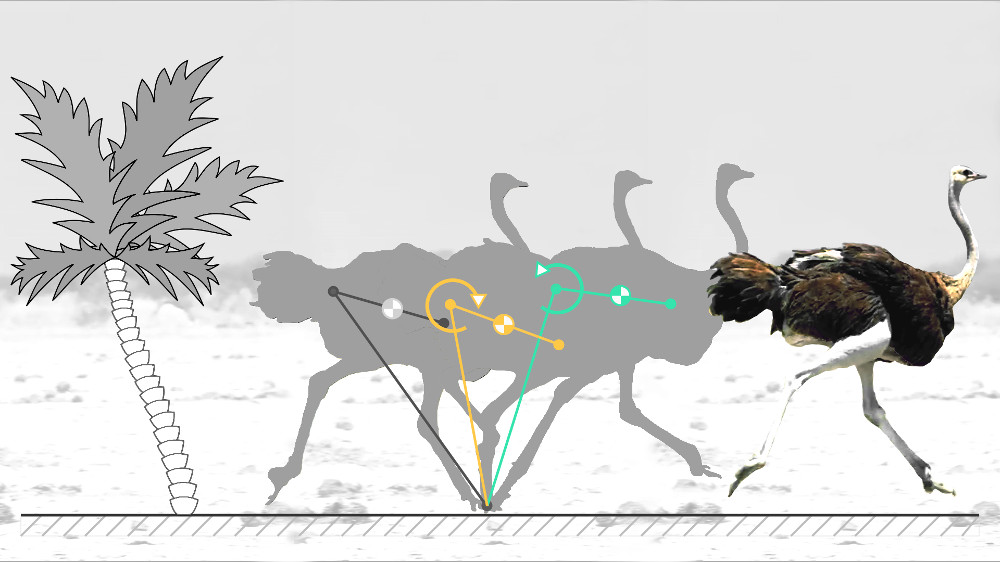 Trunk pitch oscillations for energy trade-offs in bipedal running birds and robots
Trunk pitch oscillations for energy trade-offs in bipedal running birds and robots
Özge Drama and Alexander Badri-Spröwitz
Bioinspiration & Biomimetics, 2020Bipedal animals have diverse morphologies and advanced locomotion abilities. Terrestrial birds, in particular, display agile, efficient, and robust running motion, in which they exploit the interplay between the body segment masses and moment of inertias. On the other hand, most legged robots are not able to generate such versatile and energy-efficient motion and often disregard trunk movements as a means to enhance their locomotion capabilities. Recent research investigated how trunk motions affect the gait characteristics of humans, but there is a lack of analysis across different bipedal morphologies. To address this issue, we analyze avian running based on a spring-loaded inverted pendulum model with a pronograde (horizontal) trunk. We use a virtual point based control scheme and modify the alignment of the ground reaction forces to assess how our control strategy influences the trunk pitch oscillations and energetics of the locomotion. We derive three potential key strategies to leverage trunk pitch motions that minimize either the energy fluctuations of the center of mass or the work performed by the hip and leg. We suggest how these strategies could be used in legged robotics.
@article{Drama_2020, author = {Drama, \"Ozge and Badri-Spr\"owitz, Alexander}, title = {Trunk pitch oscillations for energy trade-offs in bipedal running birds and robots}, doi = {10.1088/1748-3190/ab7570}, year = {2020}, publisher = {{IOP} Publishing}, journal = {Bioinspiration {\&} Biomimetics}, url = {https://iopscience.iop.org/article/10.1088/1748-3190/ab7570}, month = mar, volume = {15}, number = {3}, pages = {036013}, abstract = {Bipedal animals have diverse morphologies and advanced locomotion abilities. Terrestrial birds, in particular, display agile, efficient, and robust running motion, in which they exploit the interplay between the body segment masses and moment of inertias. On the other hand, most legged robots are not able to generate such versatile and energy-efficient motion and often disregard trunk movements as a means to enhance their locomotion capabilities. Recent research investigated how trunk motions affect the gait characteristics of humans, but there is a lack of analysis across different bipedal morphologies. To address this issue, we analyze avian running based on a spring-loaded inverted pendulum model with a pronograde (horizontal) trunk. We use a virtual point based control scheme and modify the alignment of the ground reaction forces to assess how our control strategy influences the trunk pitch oscillations and energetics of the locomotion. We derive three potential key strategies to leverage trunk pitch motions that minimize either the energy fluctuations of the center of mass or the work performed by the hip and leg. We suggest how these strategies could be used in legged robotics.} }Drama, Ö., & Badri-Spröwitz, A. (2020). Trunk pitch oscillations for energy trade-offs in bipedal running birds and robots. Bioinspiration & Biomimetics, 15(3), 036013. https://doi.org/10.1088/1748-3190/ab7570
Conference Proceedings
2020
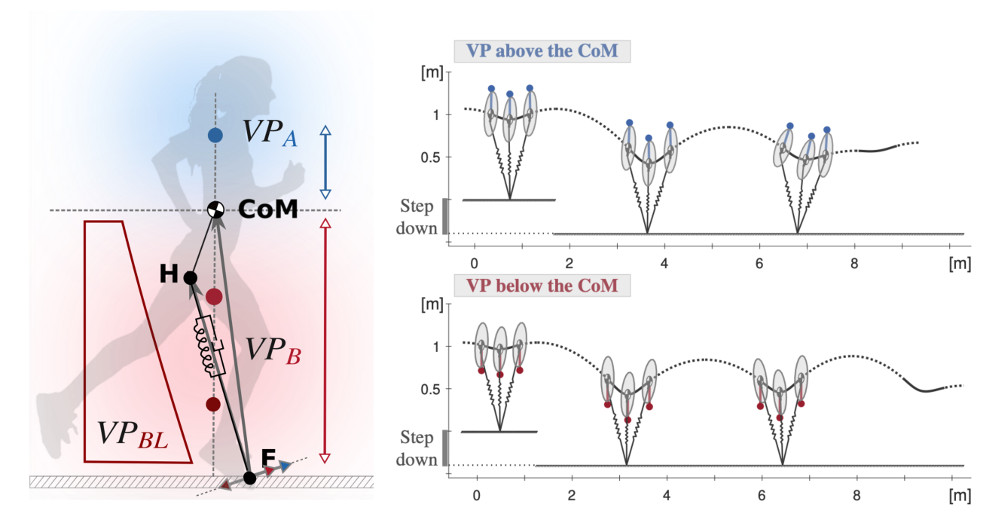 VP above or below? A new perspective on the story of the virtual point
VP above or below? A new perspective on the story of the virtual point
Özge Drama and Alexander Badri-Spröwitz
Dynamic Walking Conference, 2020The abstract is not available.
@inproceedings{Drama_2020_DW, title = {VP above or below? A new perspective on the story of the virtual point}, author = {Drama, \"Ozge and Badri-Spr\"owitz, Alexander}, booktitle = {Dynamic Walking Conference}, month = may, year = {2020} }Drama, Ö., & Badri-Spröwitz, A. (2020, May). VP above or below? A new perspective on the story of the virtual point. Dynamic Walking Conference.
2019
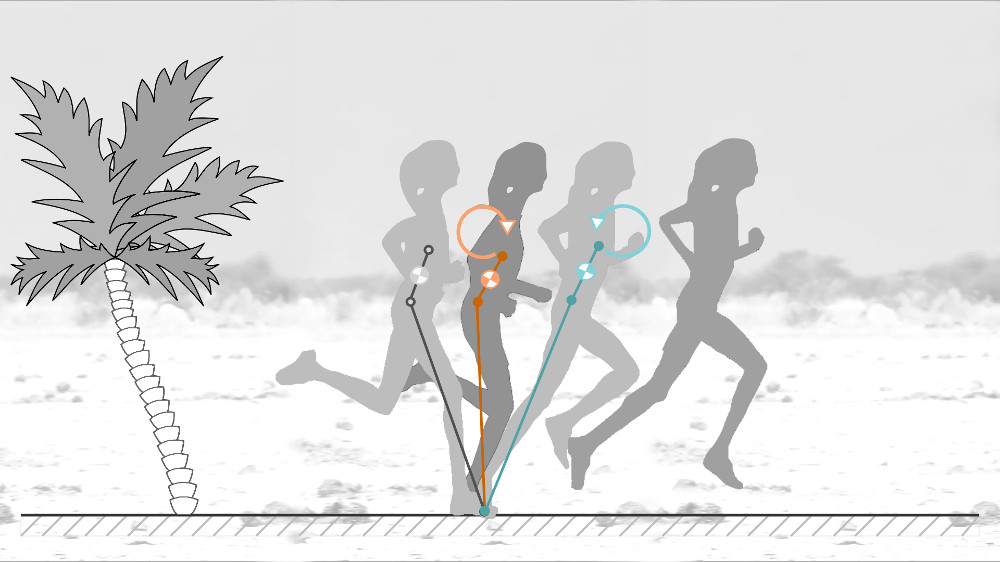 Trunk pitch oscillations for joint load redistribution in humans and humanoid robots
Trunk pitch oscillations for joint load redistribution in humans and humanoid robots
Özge Drama and Alexander Badri-Spröwitz
IEEE-RAS International Conference on Humanoid Robots, 2019Creating natural-looking running gaits for humanoid robots is a complex task due to the underactuated degree of freedom in the trunk, which makes the motion planning and control difficult. The research on trunk movements in human locomotion is insufficient, and no formalism is known to transfer human motion patterns onto robots. Related work mostly focuses on the lower extremities, and simplifies the problem by stabilizing the trunk at a fixed angle. In contrast, humans display significant trunk motions that follow the natural dynamics of the gait. In this work, we use a spring-loaded inverted pendulum model with a trunk (TSLIP) together with a virtual point (VP) target to create trunk oscillations and investigate the impact of these movements. We analyze how the VP location and forward speed determine the direction and magnitude of the trunk oscillations. We show that positioning the VP below the center of mass (CoM) can explain the forward trunk pitching observed in human running. The VP below the CoM leads to a synergistic work between the hip and leg, reducing the leg loading. However, it comes at the cost of increased peak hip torque. Our results provide insights for leveraging the trunk motion to redistribute joint loads and potentially improve the energy efficiency in humanoid robots.
@inproceedings{Drama_2019, author = {Drama, \"Ozge and Badri-Spr\"owitz, Alexander}, booktitle = {IEEE-RAS International Conference on Humanoid Robots}, title = {Trunk pitch oscillations for joint load redistribution in humans and humanoid robots}, year = {2019}, month = oct, pages = {531--536}, doi = {10.1109/Humanoids43949.2019.9035042}, url = {https://ieeexplore.ieee.org/document/9035042}, issn = {2164-0580}, abstract = {Creating natural-looking running gaits for humanoid robots is a complex task due to the underactuated degree of freedom in the trunk, which makes the motion planning and control difficult. The research on trunk movements in human locomotion is insufficient, and no formalism is known to transfer human motion patterns onto robots. Related work mostly focuses on the lower extremities, and simplifies the problem by stabilizing the trunk at a fixed angle. In contrast, humans display significant trunk motions that follow the natural dynamics of the gait. In this work, we use a spring-loaded inverted pendulum model with a trunk (TSLIP) together with a virtual point (VP) target to create trunk oscillations and investigate the impact of these movements. We analyze how the VP location and forward speed determine the direction and magnitude of the trunk oscillations. We show that positioning the VP below the center of mass (CoM) can explain the forward trunk pitching observed in human running. The VP below the CoM leads to a synergistic work between the hip and leg, reducing the leg loading. However, it comes at the cost of increased peak hip torque. Our results provide insights for leveraging the trunk motion to redistribute joint loads and potentially improve the energy efficiency in humanoid robots.} }Drama, Ö., & Badri-Spröwitz, A. (2019). Trunk pitch oscillations for joint load redistribution in humans and humanoid robots. IEEE-RAS International Conference on Humanoid Robots, 531–536. https://doi.org/10.1109/Humanoids43949.2019.9035042
2018
 Impact of trunk orientation for bipedal locomotion
Impact of trunk orientation for bipedal locomotion
Özge Drama
Dynamic Walking Conference, 2018The abstract is not available.
@inproceedings{Drama_2018_DW, title = {Impact of trunk orientation for bipedal locomotion}, author = {Drama, \"Ozge}, booktitle = {Dynamic Walking Conference}, month = may, year = {2018}, url = {http://robots.ihmc.us/dwc2018-proceedings} }Drama, Ö. (2018, May). Impact of trunk orientation for bipedal locomotion. Dynamic Walking Conference. http://robots.ihmc.us/dwc2018-proceedings
2017
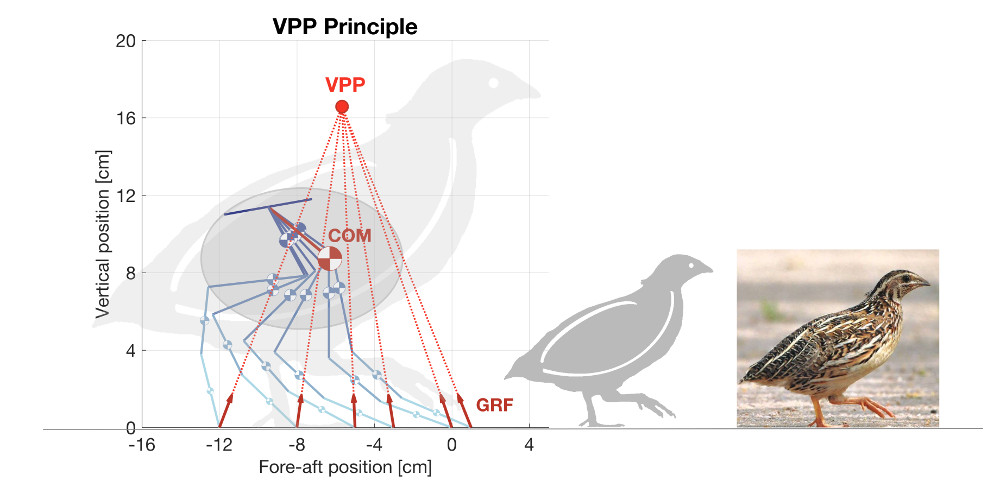 Linking mechanics and learning
Linking mechanics and learning
Steve Heim, Felix Grimminger, Özge Drama, and Alexander Spröwitz
Dynamic Walking Conference, 2017The abstract is not available.
@inproceedings{Drama_2017, title = {Linking mechanics and learning}, author = {Heim, Steve and Grimminger, Felix and Drama, \"Ozge and Spr\"owitz, Alexander}, booktitle = {Dynamic Walking Conference}, month = may, year = {2017} }Heim, S., Grimminger, F., Drama, Ö., & Spröwitz, A. (2017, May). Linking mechanics and learning. Dynamic Walking Conference.
2011
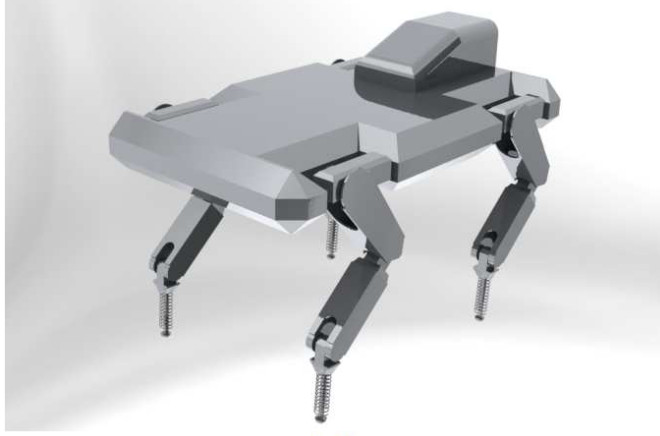 ZMP reference trajectory generation with preview control for a quadruped robot
ZMP reference trajectory generation with preview control for a quadruped robot
Kaan Can Fidan, Tunç Akbaş, Şefik Emre Eskimez, Selim Özel, Ömer Kemal Adak, Özge Drama, Mert İsmail Konukoğlu, Güneş, and Kemalettin Erbatur
Proceedings of the Turkey Automation Conference, 2011Bacakları üzerinde hareket eden robotların engel aşma konusunda önemli avantajları söz konusudur. Özellikle dört bacaklı robotların değişken arazi yapıları üzerinde birçok uygulamaları düşünülmektedir. Bu çalışmada, dört bacaklı bir robotun düz zemin üzerinde hızlı yol almasına yönelik tırıs türü ilerleme üzerinde durulmaktadır. Sıfır Moment Noktası (SMN) karalılık kriterine ve Doğrusal Ters Sarkaç Modeli’ne (DTSM) dayalı bir yürüme referansı sentez yöntemi sunulmaktadır. Tırıs ilerleme için bir SMN referans yörüngesi önerilmiş, bu yörüngeden, önizlemeli kontrol yaklaşımı ile Robot Ağırlık Merkezi (RAM) için bir referans yörünge elde edilmiştir. Oluşturulan ağırlık merkezi yörüngesi ters kinematik yöntemi ile bacak eklemlerinin konum referanslarının hesaplanmasında kullanılmıştır. Önerilen referans sentezi yöntemi, 16 serbestlik dereceli bir robot modeli ile üç boyutlu ve tam dinamikli bir simülasyon ortamında denenmiştir. Simülasyon sonuçları sunulan yaklaşımın başarılı olduğunu göstermektedir.
@inproceedings{Drama_2011, author = {Fidan, Kaan Can and Akba\c{s}, Tun\c{c} and Eskimez, \c{S}efik Emre and \"Ozel, Selim and Adak, \"Omer Kemal and Drama, \"Ozge and Konukoğlu, Mert İsmail and G\"uneş and Erbatur, Kemalettin}, booktitle = {Proceedings of the Turkey Automation Conference}, title = {ZMP reference trajectory generation with preview control for a quadruped robot}, year = {2011}, abstract = {Bacakları üzerinde hareket eden robotların engel aşma konusunda önemli avantajları söz konusudur. Özellikle dört bacaklı robotların değişken arazi yapıları üzerinde birçok uygulamaları düşünülmektedir. Bu çalışmada, dört bacaklı bir robotun düz zemin üzerinde hızlı yol almasına yönelik tırıs türü ilerleme üzerinde durulmaktadır. Sıfır Moment Noktası (SMN) karalılık kriterine ve Doğrusal Ters Sarkaç Modeli’ne (DTSM) dayalı bir yürüme referansı sentez yöntemi sunulmaktadır. Tırıs ilerleme için bir SMN referans yörüngesi önerilmiş, bu yörüngeden, önizlemeli kontrol yaklaşımı ile Robot Ağırlık Merkezi (RAM) için bir referans yörünge elde edilmiştir. Oluşturulan ağırlık merkezi yörüngesi ters kinematik yöntemi ile bacak eklemlerinin konum referanslarının hesaplanmasında kullanılmıştır. Önerilen referans sentezi yöntemi, 16 serbestlik dereceli bir robot modeli ile üç boyutlu ve tam dinamikli bir simülasyon ortamında denenmiştir. Simülasyon sonuçları sunulan yaklaşımın başarılı olduğunu göstermektedir.} }Fidan, K. C., Akbaş, T., Eskimez, Ş. E., Özel, S., Adak, Ö. K., Drama, Ö., Konukoğlu, M. İ., Güneş, & Erbatur, K. (2011). ZMP reference trajectory generation with preview control for a quadruped robot. Proceedings of the Turkey Automation Conference.